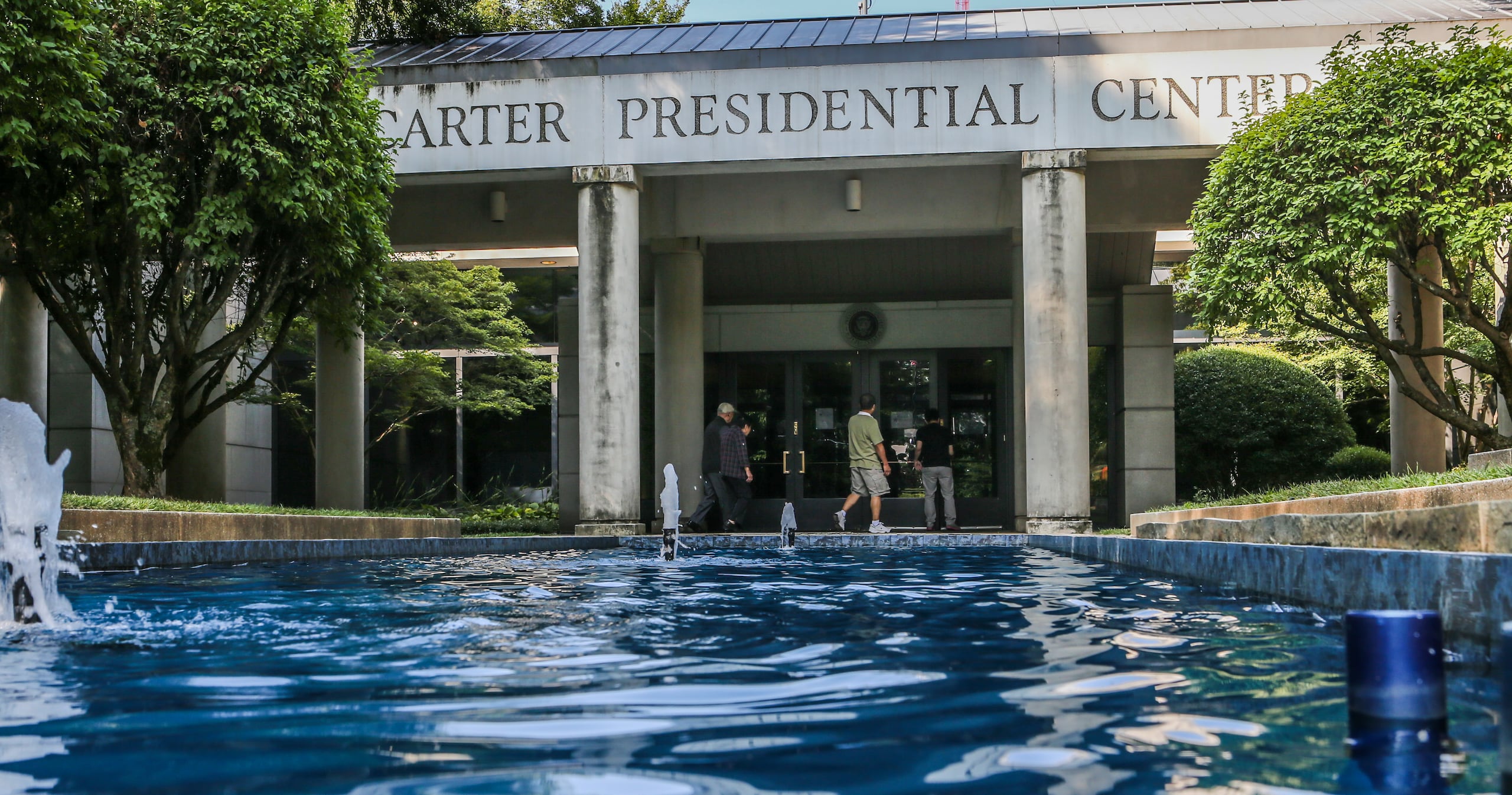Guide to visiting the Carter Presidential Center

Built in the ‘80s, the Carter Center and adjoining Jimmy Carter Presidential Library & Museum (collectively known as the Carter Presidential Center) sit on a 35-acre park east of Downtown Atlanta.
Never been, or haven’t been back in a while? Here’s the perfect guide to reference before your next visit.
Where is the Carter Presidential Center located?
The Carter Center is located at 453 John Lewis Freedom Parkway, and is easily accessible off of the Downtown Connector, heading toward Little Five Points. The library and museum are next door, at 441 Freedom Parkway. The center is surrounded by greenery and water and a nondenominational chapel. Click here for directions.
When is the Carter Presidential Center open?
The center, a nonprofit think tank affiliated with Emory University, is only open to the public by appointment or for special events, but the museum and library are open throughout the week.
The gardens, which include the Carter Center and Jimmy Carter Presidential Library and Museum, are open during daylight hours to the public from about 6 a.m. to 9 p.m. April through October, and from about 7 a.m. to 7 p.m. November through March.
Museum Hours: Tuesday through Saturday, 10 a.m. to 4:45 p.m. Last admission sale is at 3:30 p.m.; Research Library Hours by appointment only: Tuesday through Friday, 9:30 a.m. to 3:30 p.m.
Admission: Admission to the museum is $12 for adults; $10 for seniors (ages 60+), active military with I.D. and college students; and free to children ages 16 and younger.
What can I expect to see when visiting the Carter Presidential Center?
The library and museum together comprise almost 70,000 square feet of space, including more than 15,000 square feet of exhibit space and about 27 million pages of White House material during Carter’s presidency as well as 500,000 photographs and hundreds of hours of film, audio and video.
The library hosts ongoing special events — some of them free. It’s a regular stop for authors on tour, for instance.
The museum also includes a permanent exhibit of significant events from Carter’s life and career; an exact replica of the Oval Office, down to the furnishings, from his 1976-1981 presidency; and his Nobel Peace Prize, awarded in 2002.
The grounds include several distinctive features (and two lakes!), such as a display of all 50 U.S. flags and “Sightless Among Miracles,” a sculpture depicting a child leading a blind man which represents the Carter Center’s efforts to combat river blindness. Click here to learn more about the grounds.
History facts:
The complex first opened in 1986, and the library was substantially renovated and then reopened in 2009. The land on which it all sits was a part of General Sherman’s headquarters during the Civil War’s Battle of Atlanta.
Carter’s vision of the presidential center was a peaceful place, like Camp David, “where seemingly unresolvable international conflicts could be worked out through mediation ... (with) a policy center where scholars could seek solutions to issues of human rights, arms control, hunger, health, environment and world peace,” the AJC’s Howard Pousner wrote in 1986.
This story was originally published by Adam Carlson in 2015 and has since been updated.
